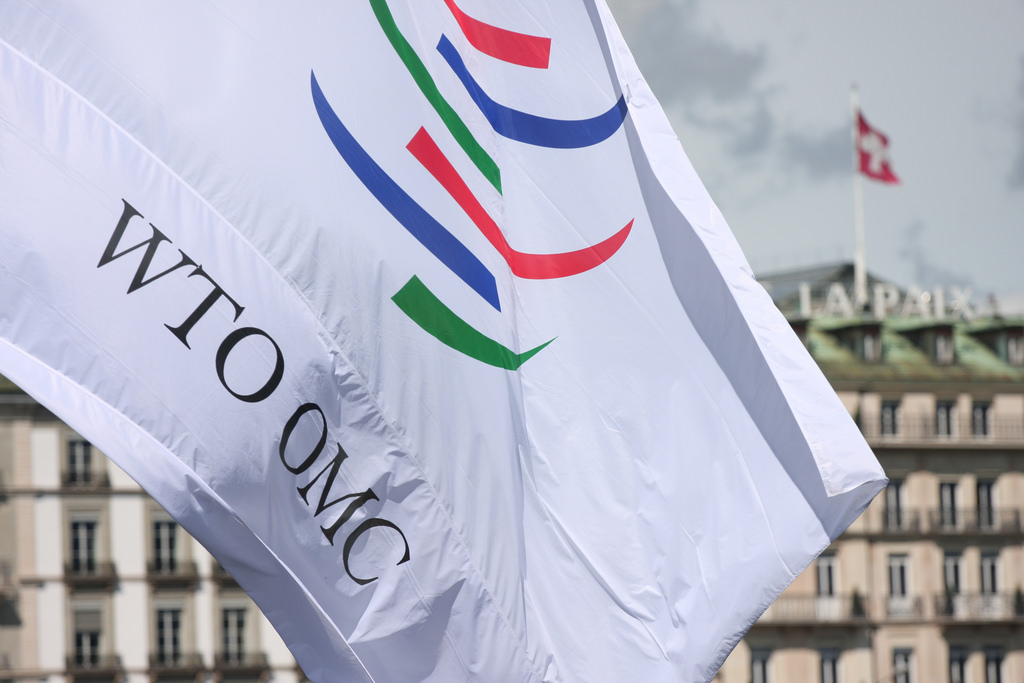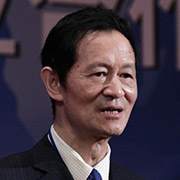
China and the U.S. had a high-level trade consultation from May 3-4, 2018 in Beijing, ending with some positive results and lots of major differences.
Long Road Ahead for Trade Talks after Consultation
The checklist given by the U.S. delegation includes a number of demands: China must cut $200 billion dollars in trade surplus by 2020, halt all subsidies to advanced manufacturing industries in its Made in China 2025 program, accept that the United States may restrict imports to industries listed under the 2025 program, strengthen intellectual property protections, accept United States restrictions on Chinese investment in sensitive technologies without retaliating, and cut its tariff to the same level as the United States. It was also reported that the U.S. demanded that China withdraw its case at the WTO on the Section 301 investigation and the 25% tariffs by July 1, 2018. Evidently, China and the U.S have significant differences.
The escalation of China-U.S. trade tension over the past weeks has caused great anxiety. The USTR announcement of a 25% tariff on $50 billion of imports from China, based on its Section 301 Investigation on Chinese practices on technology transfer, was met with a strong counter-measure from the Chinese government 13 hours later, with a 25% tariff on $50 billion worth of imports from the U.S. Also, China immediately referred the U.S. Section 301 Investigation and the tariffs to the Dispute Settlement Mechanism of WTO. President Trump then asked the USTR for additional tariffs on $100 billion of imports from China. This only resulted in an even stronger resolve from the Chinese Ministry of Commerce to “fight to the finish.”
The trade tension extended to the technology and investment areas when the U.S. Department of Justice on April 16 banned U.S. companies from supplying chips to ZTE for seven years, and the Federal Communication Commission suggested on April 19 a ban on buying Chinese telecom products. Meanwhile, the U.S. Treasury Department is busy finding a new legal basis for blocking Chinese high-tech M&A in the U.S.
Section 301 Investigation and Tariffs are in Violation of WTO Rules
There have been complaints from U.S. businesses on China’s practices in tech transfer, IPR protection, and fair competition. These have been the subjects of bilateral dialogues and joint efforts by both governments for years. They might well be handled under the bilateral or WTO framework.
The USTR Section 301 investigation report cited cases offered by the U.S. China Business Council (USCBC), which comprises of the leading American multinationals operating in China. According to the USCBC China business environment survey 2017, 81% of member respondents said that they had no compulsory tech transfer problems in China, while 19% answered yes. Of this 19%, 67% said that the transfer requirement was from Chinese businesses, 33% said it was from the Chinese central government, and 25% said it was from the local government. The survey gave no concrete evidence on who forced which U.S. companies to transfer what technology in what project. As a result, the Section 301 investigation report also failed to give any hard, concrete evidence. Even if we take that into account, it amounted to less than one fifth of total U.S. companies, and the Chinese central government (no hard evidence here either) accounted for one third of that. Hence, it is a limited issue, not representative of bilateral trade as a whole.
We could easily have those issues resolved at the WTO. The Agreement on Trade-Related Aspects of Intellectual Property Rights (TRIPS) under the WTO covers issues of technology transfer, layout design of integrated circuits, patent, industrial design, and copyrights. It is based on recognition of all the international treaties under the World Industrial Property Organization (WIPO), and on three WTO principles: national treatment, most favored nation, and balanced protection. Hence, international rules and standards are there for practically all the U.S. businesses.
However, the USTR did not follow that path. Instead, Robert Lighthizer launched the Section 301 investigation, in violation of the WTO rules. Clause 23 of the WTO “Understanding on Rules and Procedures governing the Settlement of Disputes” stipulates that members shall “not make a determination to the effect that a violation has occurred,” and “shall make any such determination consistent with the findings of the panel of Appellate Body report.” It means that only the WTO Dispute Settlement Mechanism has the right to determine if China is in violation of relevant WTO rules. The U.S., as a leading member of the WTO, signed the Understanding. In 1998, USTR launched a Section 301 Investigation on the EU. EU then turned to the WTO, and the U.S. lost the case. The USTR then promised not to resort to unilateral Section 301 moves any more.
Twenty years later, the USTR forgot its promise and made the same violation. Unilateral tariffs are banned under WTO rules, as tariff levels are set by multilateral negotiations, not by unilateral government decisions. During the recent high-level consultation, the U.S. delegation still insisted on the 301 investigation and 25% unilateral tariffs, neglecting the WTO governance once again.
Multilateral Trade Mechanism under Threat
USTR even went further, forcing other countries to give the U.S. “good bargains”. It used the steel and aluminum tariffs to this effect in U.S.- Korea Free Trade Agreement renegotiation. South Korea agreed to increase the U.S. automobile quota to South Korea to escape tariffs. If China makes this same mistake and negotiates with the U.S. under pressure from tariffs and the Section 301 Investigation, the unilateral violation would be legitimized, and the WTO rules would be useless. Then all the countries can do whatever they want to impose tariffs, or other restrictive measures. World trade would fall into chaos, creating significant risks to the world economy.
In 1930, the U.S. adopted the Smoot-Hawley Act to considerably raised tariff levels across the board, which hit an average of 53.2% in 1932, to protect the American jobs. Then Canada, the UK, and France retaliated with equal tariff hikes. As a result, U.S. exports shrank by 66%, and imports shrank by 62% from 1929-1933, and world trade fell by 66%. The U.S. unemployment rate shot up to 30%, the opposite of what the policy hoped to achieve.
The USTR’s Section 301 Investigation and tariffs have posed a major challenge to the authority and effectiveness of the multilateral trade mechanism established after the end of World War II. The current China-U.S. trade tension is not only a bilateral showdown, still less a tech transfer issue, but a major struggle between unilateral protectionism and multilateral free trade.
Tariff Measures Targeting Made in China 2025
A close look at the tariff checklist shows it has nothing to do with the Section 301 Investigation which addresses technology transfer and IPR, not products. The list includes iron/non-alloy steel semi-finished products, central heating boilers, textile printing machinery, cooking stoves, dishwashing machines, and sowing machine needles. No one would believe that China needs to force tech transfer for those very low-end items. Further down the list, the main categories include nuclear reactors and parts, marine purpose internal combustion piston engines, and aircraft. Across the board, not a single one of these was covered in the Section 301 Investigation report. However, they fall within the 10 focal industries identified in the Made in China 2025 plan.
Peter Navarro, Chairman of the National Trade Committee, abandoned all pretense when he said in a Bloomberg interview that “the target” of President Trump’s tariff order is certainly the focus industries in Made in China 2025. His remarks were later confirmed by the USTR.
China, as a sovereign state, has its legal right to development. The Trump Administration could dispute specific measures within Made in China 2025, but not the Made in China plan itself. China never challenges President Trump’s tax policy, because it is a domestic issue of the U.S.
It would be naïve to think that the moonshot tariffs and other tech restrictions could stop or slow down the Made in China 2025 plan. As the Chinese and American high-tech sectors are closely interrelated in the global supply chain which also spans Europe, Japan and the rest of Asia, any disruption will hit American high-tech companies as well. Apple Inc. has 25% of global net income from the greater China area, and the loss of the Chinese market could lead to 27,000 job losses and a stock market crash. Qualcomm even draws two thirds of its income from China. Its stock fell by 18% since the USTR announced the tariff measures. The seven leading American IT and telecom providers – HP, Dell, Microsoft, IBM, Intel, Cisco, and Unisys – got an average of 51% of their components from China during 2012-2017, according to a report requested by the U.S.-China Economic and Security Review Commission. Made in China 2025 will offer an even larger China market for world leading technology players. If they lose the China market, they can’t support the R&D in cutting edge technologies that’s critical to their future.
Made in China 2025 is open to America and the rest of world. As stated by President Xi Jinping, China will further open up its manufacturing and services as soon as possible. The Chinese economy will grow by an aggregate of 50-60% over the next eight years by 2025, meaning a tremendous new market, new industries, and new services, far outstripping the potential in any other part of the world. The Trump Administration should encourage the American business community to ride on China’s coattails.
WTO Rules-Based Talk the Only Solution
Despite all the major differences, the consultation on May 4-5 itself was very constructive, and the agreement for further talks is headed in the right direction. Hopefully both sides will have enough political will and wisdom to reach an agreement in the end. However, the China-U.S. trade talks can only be successful on three conditions.
First, common approach. China and the U.S. used to have numerous differences and will continue to have differences in the years ahead. If both sides share the approach of managing differences through dialogue and negotiation while seeking new opportunities for cooperation, the bilateral trade relationship will be stable.
Second, common basis. All the major issues can only be settled on the common standards and rules, or WTO rules. China and the U.S. are members of the WTO and governed by the same set of rules. No domestic laws should apply to the other party. If both sides recognize the relevant WTO rules as the common standard, China and the U.S. will be much closer to a framework agreement.
Third, equal position. Both China and the U.S. are equal in the talks. There should be a checklist from each side for equal respect, with no threat hanging over anyone’s head.
China and the U.S. should strive to anchor the talks on these three conditions, and work together towards a reasonable, balanced agreement, which will be crucial for the world’s two largest economies, and for the whole world as well.




